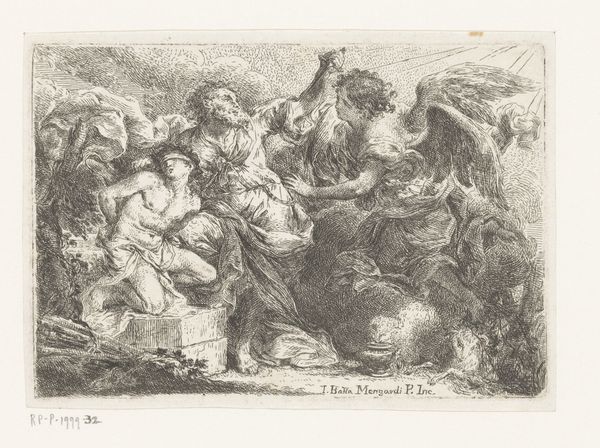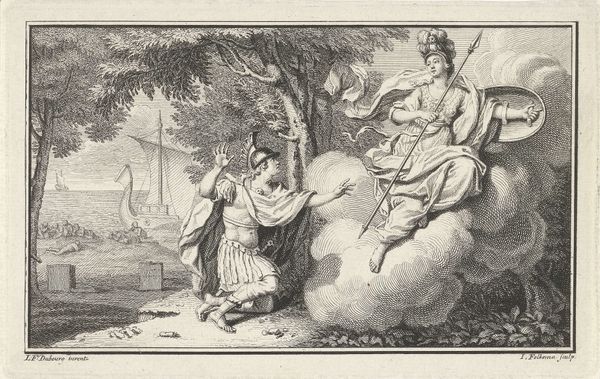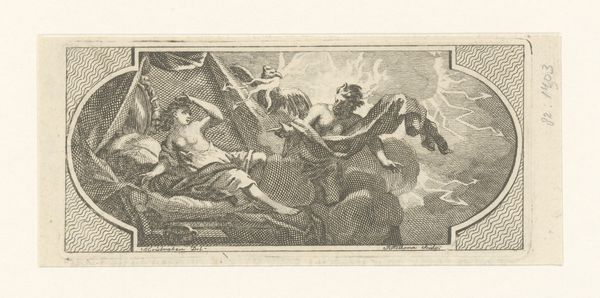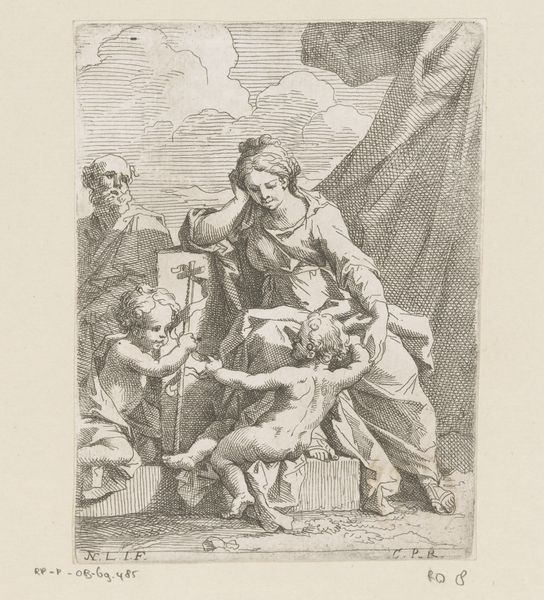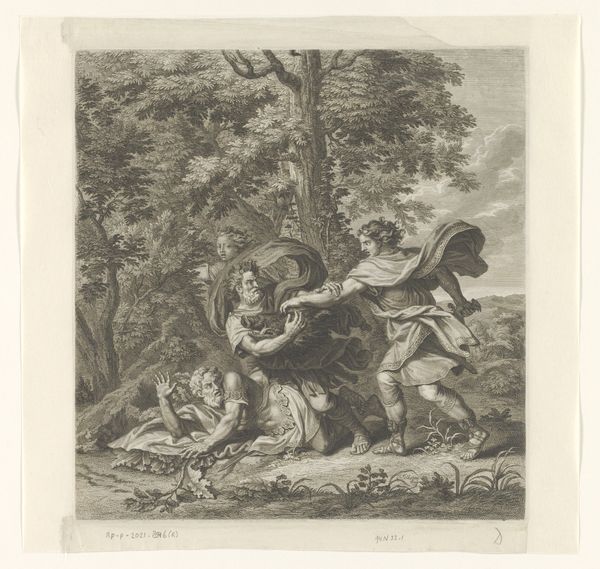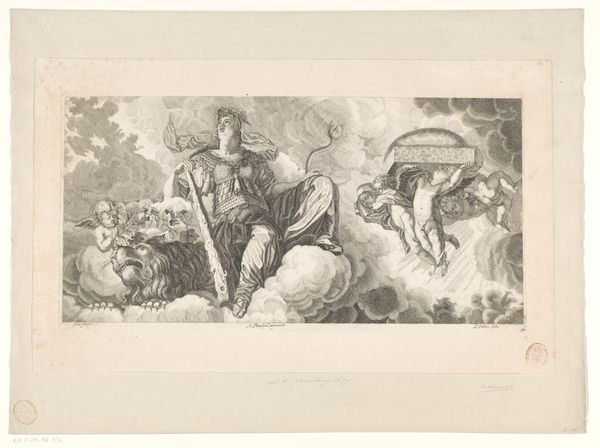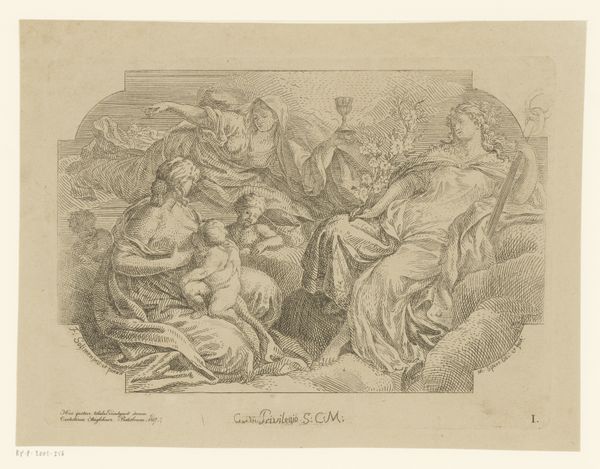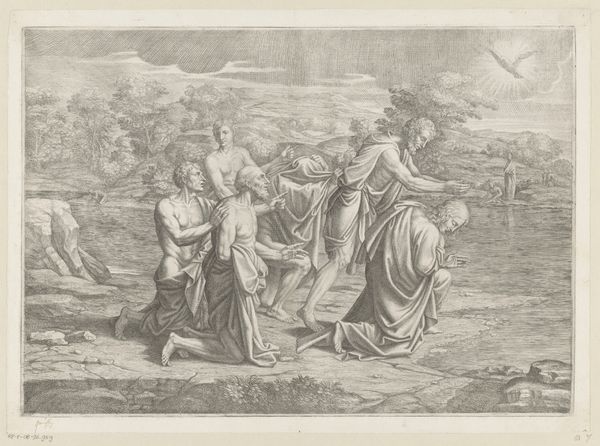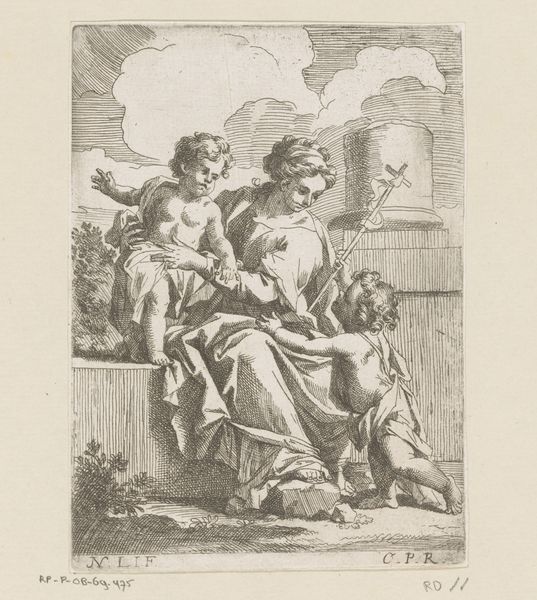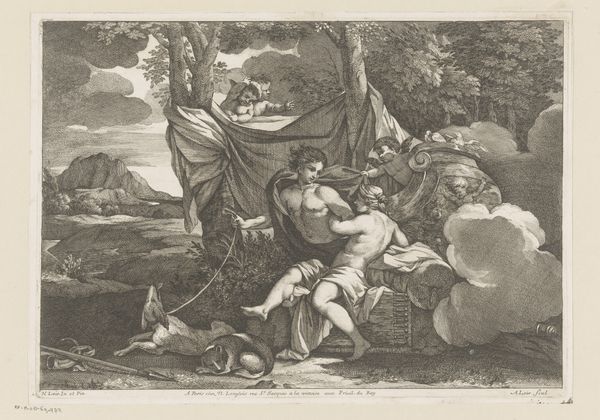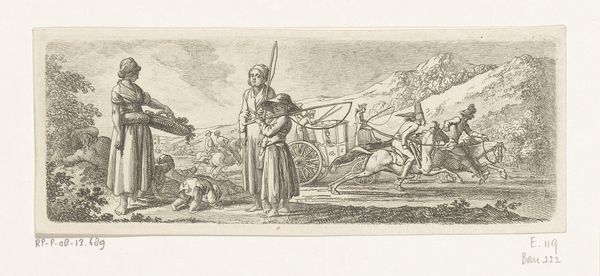
print, engraving
#
allegory
#
baroque
# print
#
old engraving style
#
history-painting
#
engraving
Dimensions: height 55 mm, width 80 mm
Copyright: Rijks Museum: Open Domain
Curator: Here at the Rijksmuseum we have a delicate engraving titled "Drie goddelijke deugden op een wolk" or "Three Divine Virtues on a Cloud." It was made sometime between 1717 and 1767 by an anonymous artist. Editor: It has a rather ethereal quality, doesn't it? The figures are all draped and seemingly floating on this billowy mass. The detail achieved with just line work is quite striking. Curator: Absolutely. As an engraving, the material production would have involved meticulous labor. We have an artisan, or perhaps someone working within a workshop context, painstakingly etching lines into a metal plate. Consider the skill and time investment! The lines, which at first glance are about aesthetic sensibility and surface qualities, evidence skilled craft production for both individual consumption and larger scale reproduction. Editor: Looking through a more contemporary lens, it presents such an idealised vision. The figures are all women, archetypes really. What are we to make of this staging of female virtues during that period? We see representations of faith holding a chalice, of hope clutching an anchor, and of charity, embracing children, all literally elevated above the earthly realm, seemingly unattainable in their perfect, divine essence. Curator: Indeed. It’s fascinating how the artist employed readily available tools—metal, burins, ink, and paper—to produce and disseminate images tied to deeply embedded social narratives. This wasn't just about individual creative expression; it was a craft inextricably linked to societal values and needs. Editor: And to class and gender too. Whose virtues are being highlighted and, of course, who could afford this art and dictate its messages? It speaks volumes about societal expectations of women during that time. Curator: I agree. To really analyze this work requires looking at the socio-economic conditions that made its creation and dissemination possible. What materials were available? Who had the skills? How was it distributed? These kinds of works show art isn't some isolated, precious object divorced from the concerns of daily life; it is integrated within and helps constitute historical contexts. Editor: So true. Considering this artwork's afterlife alongside shifting societal attitudes, it almost feels like a document in understanding our historical trajectory of gender roles and class divides, revealing our complex cultural development. Curator: Considering its social and material production provides new meaning today. Editor: Agreed; what's really revealed by art is less in the subject itself and rather how we relate to it now.
Comments
No comments
Be the first to comment and join the conversation on the ultimate creative platform.

